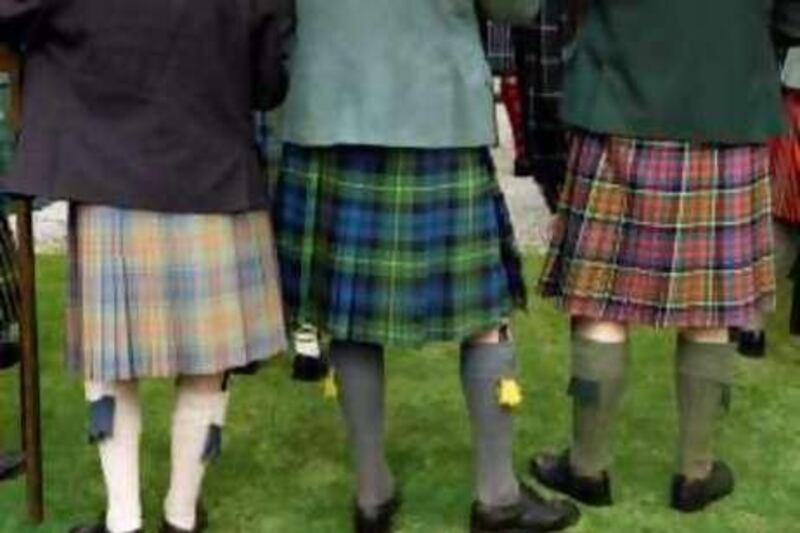Burhan Wazir Few celebrations require the type of casual planning that goes into Hogmanay, the Scottish New Year celebration, which take place on Dec 31. For a start, there is the custom of 'first footing'. Growing up in the south side of Glasgow in the 1980s, our long-suffering neighbour, just before midnight, would emerge from his house dressed in a kilt and clutching a set of bagpipes. Mr Cluness, a bank manager by trade, would silently walk to the end of Eastwood Mains Road and on the stroke of New Year, start to walk back to his house, all pipes blaring. Neighbours would noisily stumble out of their homes - bleary-eyed and groaning with over-indulgence - and follow Mr Cluness to his house. Each would cross the threshold of the Cluness family abode, offering gifts of coal, shortbread or fruitcake. Most would stay until well past dawn; and the sounds of singing could be heard across the area.
The importance of 'first footing' can't be emphasised enough. Visitors to a house are expected to arrive bearing a symbolic gift: turn up empty-handed, and you risk being ostracised for decades. The ritual is said to inaugurate a feeling of good luck for the rest of the year. Guests should feel welcome to stay for as long as they wish. Most usually depart after a porridge breakfast. Should you feel comfortable with your neighbours, residents should take turns hosting the event.
Burns supper, on the other hand, normally taking place around Jan 25 each year, requires nothing less than meticulous - some would argue military-style planning - if it is to be executed successfully. These days, a plethora of organisations like Scottish clubs, Scots restaurants and Burns societies will gladly hold catered events celebrating the birthday of Robert Burns. The spirit of the evening dictates that Burns night should be celebrated at home with all the trimmings - haggis, mashed potatoes and neeps. Dessert should consist of oatcakes and cheese.
For guests attending a traditional Burns supper for the first time, the order of the supper can prove to be as confusing as a sessionof the European Parliament. The order of events, much like the haggis, can be boiled down to a few essentials. The host, on having seated all diners, should recite the Selkirk grace, as preferred by Burns himself. "Some hae meet and canna eat, / And some wad eat that want it; / But we hae meat, and we can eat, / Sae let the Lord be thankit." The meal will commence with a typical Scottish soup, like broth. The entrance of the haggis is always a sign to prompt visitors to stand - returning to their seats once the host's 'Address to a Haggis' is over. What follows is usually a riotous meal, full of merriment and humour. Guests are warned to remain aware, however. Each of them may be called upon to deliver a recital of Burns' poetry, or to recall some aspect of the poet's life. I would recommend a line or two from either Tam O'Shanter or To a Mouse, to a Louse. Non-Scottish guests are preferred to refrain from adopting a mock Celtic accent during proceedings. Burns supper regularly ends with country dancing, but not before another possible pitfall is negotiated. One male guest is invited to make a "Toast to the Lassies" - mostly delivered as an amusing yet provocative take on companionship. A female diner then replies with a "Toast to the Laddies". This writer has witnessed examples of both which have ended in acts of near violence. My advice to the host? Quickly settle proceedings with a loud rendition of Auld Lang Syne.










